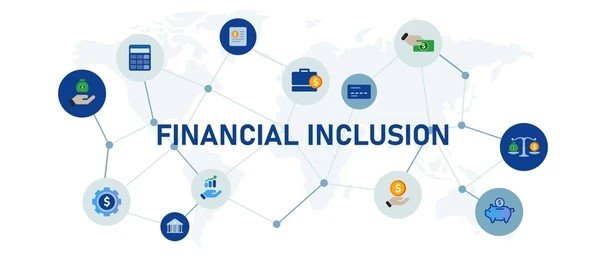
Financial inclusion, the process of providing access to affordable and essential financial services for all individuals and businesses, has become a cornerstone of India’s development agenda. With its vast and diverse population, India has made significant strides in expanding financial access to under served and marginalized sections of society. Yet, the journey towards true financial inclusion is far from complete.
Current State of Financial Inclusion
India has made remarkable strides in financial inclusion over the past decade. Groundbreaking initiatives such as the Pradhan Mantri Jan Dhan Yojana (PMJDY) have been instrumental in this progress. Since its launch in 2014, PMJDY has facilitated the opening of over 500 million bank accounts, significantly expanding the reach of formal banking services. This initiative has been complemented by the rapid proliferation of digital payment platforms like the Unified Payments Interface (UPI), which have made financial transactions accessible even in remote areas with limited banking infrastructure.
Despite this progress, challenges remain. The World Bank’s Global Findex Report 2021 highlights that approximately 20% of adults in India still lack access to formal financial institutions. This exclusion is often driven by a complex interplay of factors, including lack of financial literacy, inadequate infrastructure, and persistent socio-cultural barriers.
Significance of Financial Inclusion
Financial inclusion is not merely a policy goal; it is a critical enabler of economic growth, social equality, and poverty alleviation.
- Economic Growth: Access to formal financial services, such as credit and savings, fosters entrepreneurship and supports the growth of small businesses, which are key drivers of economic development.
- Social Equality: Financial inclusion plays a crucial role in reducing income inequality by empowering low-income households with the tools and resources to improve their livelihoods and participate more fully in the economy.
- Poverty Alleviation: Access to formal credit and insurance provides a safety net for vulnerable groups, protecting them from economic shocks and promoting greater stability.
Key Initiatives Driving Financial Inclusion
Several key initiatives have been instrumental in driving India’s progress towards financial inclusion:
- Digital India Movement: The issuance of over 1.2 billion Aadhaar cards, coupled with the widespread adoption of biometric identification, has simplified the process of opening bank accounts and accessing government subsidies, significantly expanding the reach of financial services.
- Direct Benefit Transfers (DBT): The DBT program has streamlined the delivery of government subsidies for food, fuel, and other welfare programs by transferring funds directly to beneficiaries’ bank accounts. This has not only improved efficiency but also reduced leakages and corruption.
- Microfinance: Microfinance institutions and self-help groups have played a crucial role in extending credit to underserved populations in rural areas, with a particular focus on empowering women entrepreneurs.
- RBI’s Financial Literacy Campaigns: The Reserve Bank of India has launched several campaigns to promote financial literacy among rural populations, aiming to bridge knowledge gaps and encourage greater participation in the formal financial system.
Challenges to Overcome
While India has made significant progress, several challenges need to be addressed to achieve comprehensive financial inclusion:
- Connectivity Issues: Poor internet connectivity in many rural areas remains a major barrier to digital financial inclusion. Expanding broadband access is essential to ensure that all citizens can benefit from digital financial services.
- Gender Gap: Women in India continue to face disproportionate barriers to accessing financial services, including lower rates of bank account ownership and credit access. Targeted interventions are needed to address this persistent gender gap.
- Trust Deficit: Limited trust in formal financial institutions remains a challenge in some communities, hindering their willingness to engage with the banking system. Building trust through transparent and customer-centric practices is essential.
The Path Forward
To achieve universal financial inclusion, India needs to adopt a multi-pronged approach:
- Investment in Digital Infrastructure: Continued investment in robust digital infrastructure is essential to bridge the connectivity gap and ensure that digital financial services are accessible to all citizens, regardless of location.
- Financial Literacy Programs: Expanding financial literacy programs through schools, NGOs, and community-based organizations is crucial to empower individuals with the knowledge and skills needed to make informed financial decisions.
- Tailored Financial Products: Developing financial products and services that are tailored to the specific needs of marginalized groups, such as small farmers and daily wage workers, is essential to ensure that financial inclusion is truly inclusive.
- Collaboration and Innovation: Strengthening partnerships between the government, private sector, and fintech startups can foster innovation and accelerate the development of inclusive financial solutions.
Conclusion
Financial inclusion is not just an economic imperative; it is a social and developmental necessity. It empowers individuals, strengthens communities, and drives sustainable economic growth. While India has made impressive progress, the journey is far from over. By continuing to invest in digital infrastructure, promote financial literacy, and develop innovative solutions, India can create a truly inclusive financial system that leaves no one behind.
